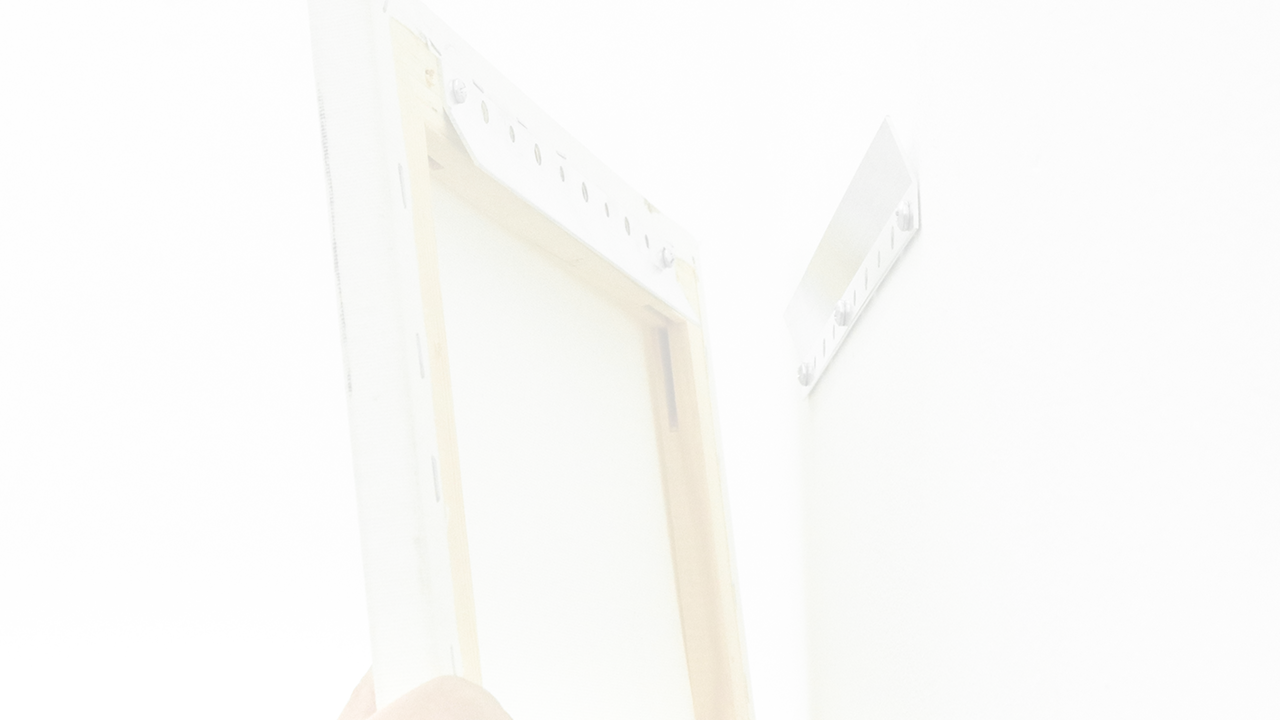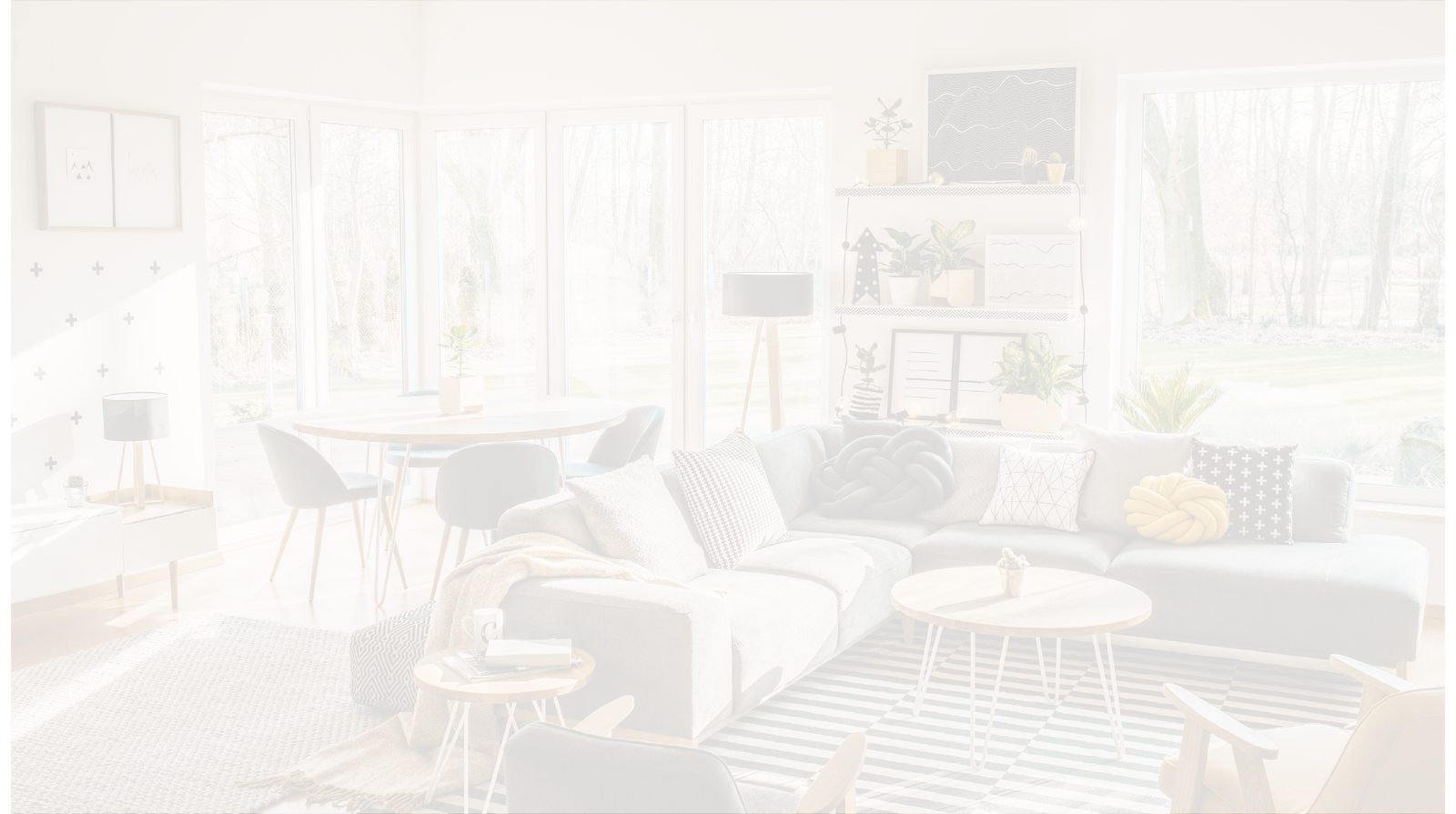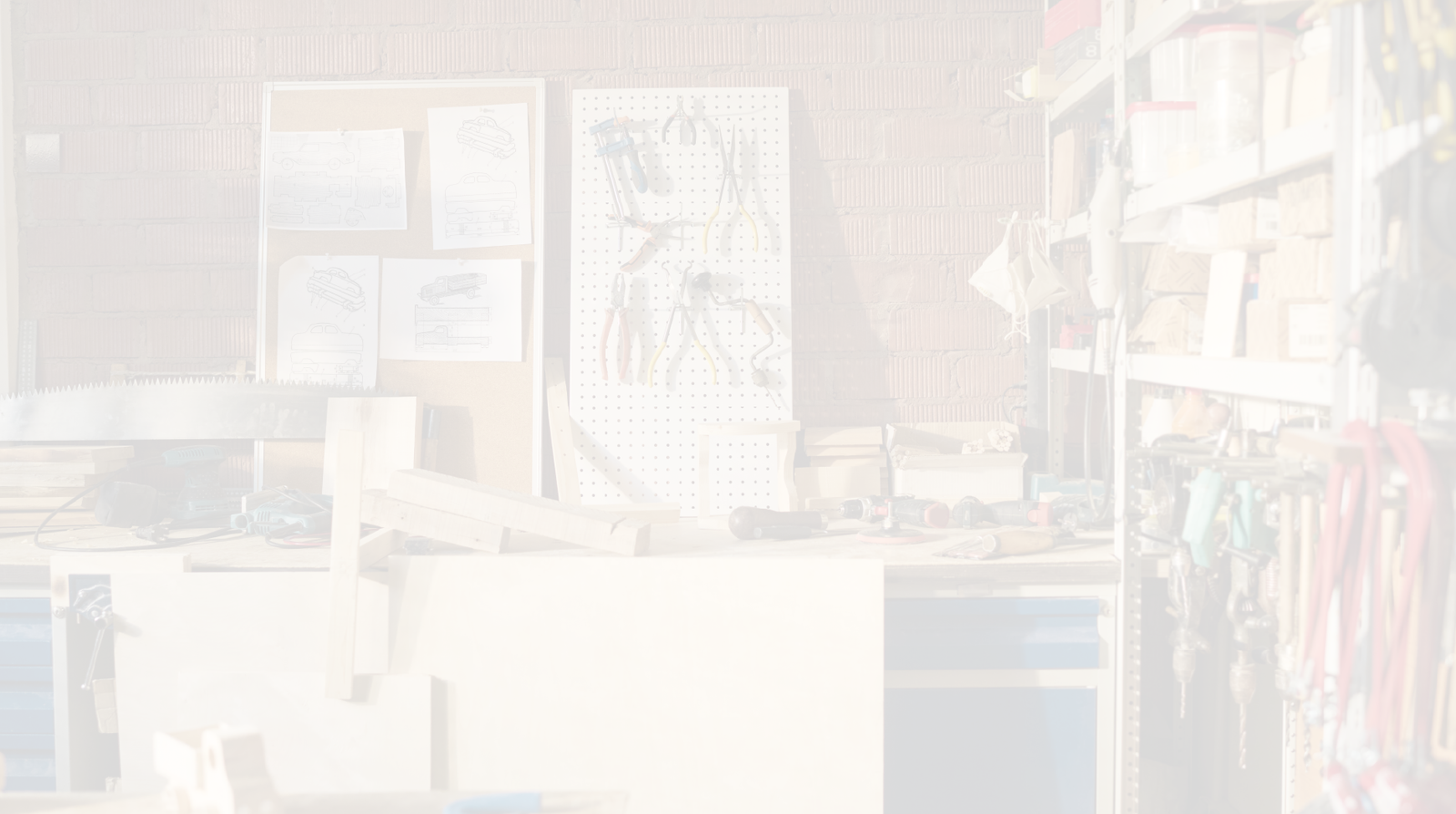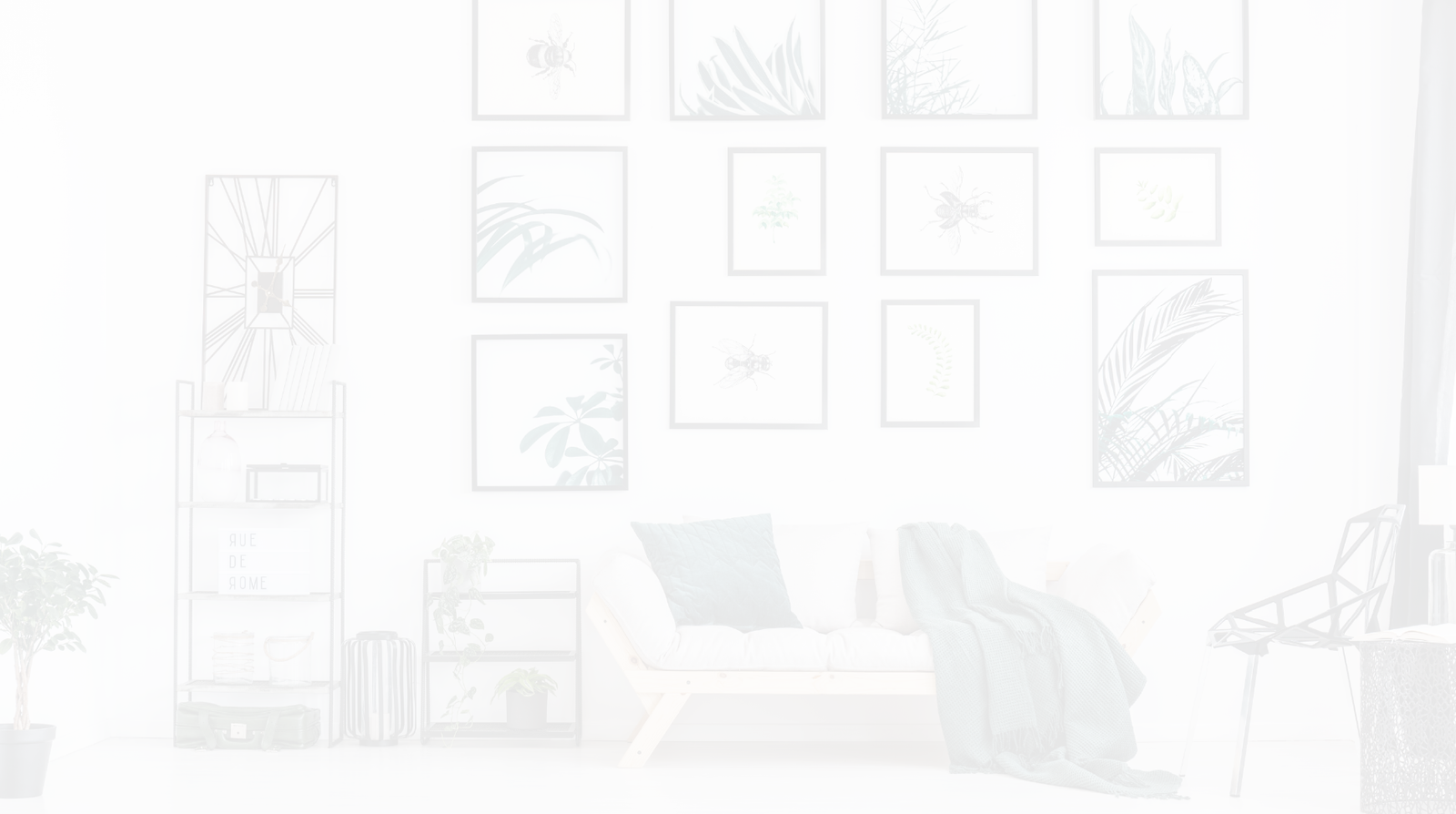Question: Do you feel confident when you hang something big on the wall, or are you scared that your expensive mirror or artwork might fall and crash into pieces?
If you answered the latter, we can’t blame you. Using the wrong picture hanging hardware can be a disaster waiting to happen—especially when hanging large and heavy items. Frames will fall, mirrors will break, and expensive art will lose its value.
That’s why knowing what picture hanger is best for hanging large and heavy objects is very important. You should be able to hang things on the wall with confidence, not fear.
The good thing is we have just the perfect hanging hardware to make that happen.
Meet French Cleats: A Builder’s Best-Kept Secret
When you have something big to hang, using the French Cleat hanging method is the way to go. French Cleats are composed of two beveled pieces of wood or metal. They are designed to interlock with each other to hang frames and decor on the wall.
Here at Picture Hang Solutions, we currently only stock metal cleats. They’re a bit more versatile than wooden cleats because the metal ones can be used in hanging light to heavy objects in both indoor or outdoor areas. And because aluminum cleats are thin, they have a less visible wall standoff, which is great for folks who prioritize the overall aesthetic of a space.

One of the common challenges we face when hanging something on the wall is making sure that it won’t fall. The reason why the French Cleat system works, and why builders love using this hanging method, is because of the angled design and interlocking feature.
The z-bar, light cleat and the flare cleat profile allow each cleat to fit perfectly when interlocked together, thus reducing the risk of falling. To reduce that risk even more, getting the right cleat length is a must.
Choosing the correct size also plays an important role in making sure that your frames stay on the wall.
The rule of thumb when choosing the right cleat length is to choose the one that covers 75% of the length or diameter of the object.
Check out this table for your reference.

Why We Love Using French Cleats
There are several reasons why French cleats are popularly used. Here’s a quick rundown:
- Easy to install
- Thin and sleek design
- More stable and level
- Secure interlocking system
- Aluminum is sturdier and weather-resistant
- Good for both indoor and outdoor use
- Minimal wall damage
Its design, safety features, material and method in hanging are what makes the overall quality of French Cleats a crowd favorite. With these in mind, it’s safe to say that they are the go-to picture hangers when you want to hang something on the wall with confidence.
Types of Cleats
Here at Picture Hang Solutions, you can find different types of cleats according to cleat profile, usage and application. Knowing these details will help you narrow down your choices and help you choose the right cleats.
Cleat Profile and Usage
A cleat set consists of two identical extruded aluminum cleats with a matching profile (shape). One is mounted on the wall, and the other on the back of the art.
There are three different cleats available in store: Light Cleats, Z-bar, and Flare Cleats.

The Z-bar and Light cleats have a slight difference in angle, but they have the same wall standoff measurement of 1/4 inch. The Flare cleats have a wall standoff measurement of 5/16 inches.
All three profiles are designed to easily engage and interlock with each other. The only difference is that the Light Cleat is compatible with both wood and metal frames. The Z-bar and Flare cleats, on the other hand, can’t be used for hanging metal frames.
Application
Regular French Cleats are generally used for light to medium-duty applications, while Heavy-Duty French Clutches are used for large and heavy objects.
Light to Medium Duty Applications
Light duty applications include small wall art, cork boards, wood frames, canvas art and picture frames. Medium duty applications include picture frames, paintings, mirrors, canvas art, desk pegboards, shadow boxes, whiteboards, and decorative panels. For your reference, the following lengths can support frames up to 50 pounds:
- 3 inches
- 6 inches
- 10 inches
- 12 inches
- 18 inches
Heavy Duty French Cleats
These are cleats that can hold up to 100 pounds or more. It’s suitable for hanging heavier objects like big mirrors, heavy art, pegboard wall organizers, shelving units, cupboards, cabinets, bulletin boards, and signages. The following sizes can be used for these applications:
- 12 inches
- 18 inches
- 24 inches
- 30 inches
- 36 inches
- 45 inches
- 48 inches
- 90 inches
Get the Right Cleats on Your First Buy
Now that you know the different lengths and types of cleats in store, you probably have an idea on what to choose for your application. Remember, to get the right french cleats, you have to know the following details:
Length or diameter of object
For square or rectangular objects, know the length. For circular objects, know the diameter. It’s as easy as that. These details will help you determine the cleat length you should use according to the rule of thumb.
Type of frame
Check in advance if the object you’re hanging has a wood frame or metal frame channel. This will help you determine if you need to get a Z-bar or Flare cleat.
Weight of object
Lastly, knowing how much the object weighs will help you choose the French Cleats that can support the object when hung on the wall.
After getting these 3 important details, you’d also want to know the type of wall and the type of anchors and screws you need. Once you’re all set, it’s time to know how to hang it up.
RELATED ARTICLE: How to Choose the Proper Aluminum French Cleats
How to Install Cleats
Installing cleats can be intimidating. We’ve been there and it isn’t easy having to figure it out on your own. That’s why we’re here to help!
Installing them is pretty straightforward. Here’s how to do it.

For Metal Frames
1. Attach the cleat to the wall. Wall cleat should be installed with screw holes at the bottom using the #8 x 1” screw and plastic wall anchors.
Make sure to level the cleat while installing — small adjustments to level the cleat can be made by moving slightly in the slotted screw holes before tightening the cleat to the wall.
2. Hold art against the wall slightly above the cleat, and then slide the frame down to engage the metal frame channel to the wall cleat.

For Wood Frames
1. Attach one cleat to the back of the frame. Cleat should be mounted with screw holes at the top using the #8x1//2” screws. You may want to drill pilot holes in a wood frame.
2. Attach the other cleat to the wall. Wall cleat should be installed with screw holes at the bottom using the #8 x 1” screw and plastic wall anchors.
Make sure to level the cleat while installing — small adjustments to level the cleat can be made by moving slightly in the slotted screw holes before tightening the cleat to the wall.
3. Hold art against the wall slightly above the wall cleat and slide the art down to interlock the two cleats.
You may slide the frame left or right to center on your wall, however, both cleats need to be engaged 90% of their length for strength and stability. To remove, lift the frame upward a few inches to disengage the cleats.
🔨PRO TIP: If the artwork backing is too fragile for screws or if you don’t want to drill into the frame, you can possibly use an adhesive.
Be sure that the type of adhesive you use works well with the aluminum cleat as well as the material your frame is made of. You also have to make sure that it has a strong hold on both surfaces. Unfortunately, we cannot advise on how much weight the cleats can hold using adhesive, so this would require some testing.
RELATED ARTICLE: 7 Easy wall Hanging Ideas Using French Cleats
The Difference Between Aluminum and Wooden French Cleats
If you've tried looking up "cleats" on the internet, the first few results you'll probably get would be all about wooden cleats. There's not much information about aluminum cleats out there, so we took it upon ourselves to compare both types.
Here's what we found:

Although both types of cleats can support heavy weights, it all boils down to what you like to use. Basically, the aluminum cleats are used more for decorative purposes while the wooden cleats are used more for storage and organization purposes.
Another thing you might want to remember is that wooden cleats are better used indoors to stay away from unpredictable weather. If you want to use French cleats outdoors, go for the aluminum type instead. They are more weather-resistant than the wooden ones.
Lastly, in terms of sizes, French cleats have no problem in giving you a wide range of lengths to work with. As mentioned earlier, cleat lengths start at 3 inches to 90 inches. Aluminum cleats can also be cut to the desired length. With wooden cleats, you can even customize your own if you don’t want to buy in store. Both types are easy to install and provide secure support.

Well, that’s all of it! It was a lot of information to take in, but hopefully this helped you narrow down your choices to a minimum.
Final Thoughts
If there’s one thing you must take away from this buyer’s guide, remember that French Cleats can be used for a lot of hanging projects, may it be at home or in your place of business. If you have other home improvement or DIY projects lined up, check out our other products. We’ve got a wide selection of picture hanging hardware for your next project.









Leave a comment (all fields required)